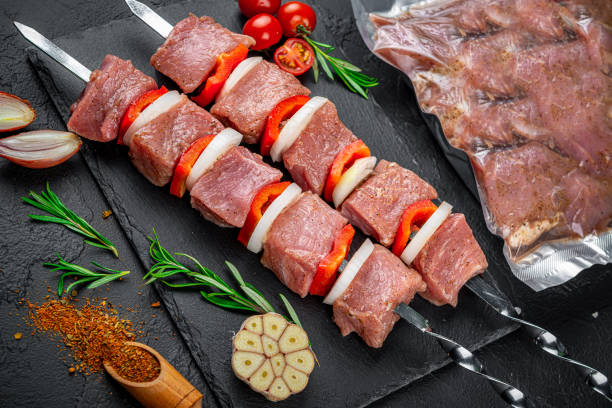If you’re running a restaurant and still prepping every protein from scratch, it’s time to rethink things. Labor’s expensive. So is inconsistency. And if you’re getting slammed on Friday night and your sous chef decides to walk, your margins don’t care. You need something that works every time, no matter who’s in the kitchen. That’s where sous vide comes in.
But don’t just run out and buy some random vacuum sealer and water bath. That’s not the point. If you’re going to use sous vide for restaurants the right way — and without bleeding money in the process — you need to buy smart. That means looking at the food, not just the gear. That means considering a commercial sous vide supplier. And that means planning for how sous vide fits into your actual operation — not somebody else’s version of a kitchen.
Contents
- 1 Why Buy Sous Vide for Restaurants Instead of Doing It Yourself?
- 2 What Kinds of Foods Make Sense for Sous Vide?
- 3 What to Look For in a Commercial Sous Vide Supplier
- 4 Mistakes Restaurants Make When Buying Sous Vide
- 5 How Sous Vide Can Expand Your Menu Without Adding Staff
- 6 Why Partnering with a Sous Vide Company Makes Sense
- 7 Final Word
Why Buy Sous Vide for Restaurants Instead of Doing It Yourself?
You can sous vide in-house. But once you scale past 30 covers a night, the logistics start to break down. Vacuum sealers, chill tanks, HACCP plans, cold chain compliance — it all adds up fast. Buying sous vide from a supplier takes the prep, the guesswork, and the equipment burden off your plate. You just finish and serve.
It’s not just about convenience. Pre-cooked sous vide proteins help with:
- Reducing labor costs (less knife work, less training)
- Shortening ticket times (sear, sauce, done)
- Keeping portions consistent
- Minimizing food waste (longer shelf life, pre-portioned)
If you’re in a kitchen where the staff turns over constantly or the prep window is tight, outsourcing your sous vide is often cheaper than trying to build it all in-house.
What Kinds of Foods Make Sense for Sous Vide?
Not everything needs it. Burgers? No. Toast? Obviously not. But when you’re dealing with proteins or dishes where consistency and moisture retention matter, sous vide works hard.
- Steak: Comes out perfect. Medium rare every time. You sear to finish and that’s it.
- Chicken breast: Doesn’t dry out. Doesn’t rubber up. Holds for service.
- Pork: Especially tenderloin or bone-in chops. Less shrinkage, better flavor.
- Short ribs, brisket, lamb shank: Long-cook proteins where braise time ties up your line.
- Eggs: Yes, you can sous vide eggs for buffet service. Keeps temps consistent.
- Salmon or other flaky fish: Sous vide helps keep them together. Easier to portion and hold.
- Vegetables and desserts: Less common, but good for batch work. Carrots, potatoes, custards.
These are the dishes where restaurants lose money when prep goes sideways. Where undercooked or overcooked ruins the whole plate. Sous vide removes that risk.
What to Look For in a Commercial Sous Vide Supplier
Not all suppliers are built for restaurants. Some are retail-focused or only serve healthcare. Others offer limited SKUs and no flexibility. If you’re buying sous vide for restaurants, you need a supplier who understands restaurant pacing, plating, and portioning.
Here’s what to evaluate:
- Menu fit: Can they provide the types of proteins you actually serve? In the portions you need?
- Customization: Do they offer options for different marinades, finishes, or packaging formats?
- Scalability: Can they supply one bistro — or fifteen units — without delays?
- Storage efficiency: Products should come sealed, chilled, and stackable. Bonus points if they’re freezable.
- Food safety standards: USDA and FDA compliance are non-negotiable.
- Finishing options: Products should handle searing, grilling, saucing, or roasting without falling apart.
And don’t forget shelf life. Good sous vide food lasts at least 30 days sealed and chilled — some much longer if frozen. That gives you flexibility on inventory and less pressure on turnover.
Mistakes Restaurants Make When Buying Sous Vide
Here’s where restaurants blow the budget:
- Buying expensive machines instead of food. Don’t drop $5,000 on circulators if what you really need is consistency in prep.
- Trying to DIY for high-volume service. Batch-cooking 100 steaks for event catering? That’s not where you want to be winging it.
- Picking the wrong supplier. If the company can’t deliver at volume or doesn’t understand kitchen workflow, you’ll regret it fast.
- Using generic products. If the protein was designed for retail microwaves, don’t expect it to plate well at your chef’s table.
Think of sous vide food as infrastructure. If it breaks under pressure or doesn’t match your menu, it’s not saving you anything.
How Sous Vide Can Expand Your Menu Without Adding Staff
This is a big deal. With sous vide in place, you can offer items that might otherwise be too labor-intensive — short ribs, stuffed chicken, pork belly, lamb. If those dishes were off-limits before because you didn’t have the staff or hours to prep them, now they’re possible. And you’re not sacrificing quality.
Because the food comes pre-cooked and vacuum sealed, it’s easy to rotate in LTOs (limited time offers), pop-up specials, or even off-menu items. All while keeping the same line staff.
Some restaurants use sous vide to extend their dayparts too. Breakfast buffet? Use sous vide eggs. Late-night room service? Pre-seared short ribs that heat and plate in minutes. You’re not reinventing the kitchen — just making it smarter.
Why Partnering with a Sous Vide Company Makes Sense
If you’re looking for a commercial sous vide supplier, you need more than just someone who sells vacuum bags. You want a team that understands real-world kitchen operations. Companies like Cuisine Solutions specialize in sous vide for restaurants — not home cooks. They offer chef-developed recipes, consistent scaling, and the ability to support restaurants, hotel groups, airlines, and even military kitchens.
More importantly, they work behind the scenes to help restaurants hit performance targets. Faster turns. Tighter labor models. Better food scores. It’s not about buying a box of chicken — it’s about changing how your kitchen works.
So yeah, you could keep doing everything in-house. Or you could stop wasting labor on prep that doesn’t need to be done on-site — and buy sous vide for restaurants the way high-efficiency kitchens already do. Partner with someone who gets it. Preferably one that supplies half the airline industry and knows what it takes to keep food consistent at scale.
Final Word
Don’t buy gear before you buy food. Sous vide should save money, not drain it. If you run a restaurant and you’re looking for ways to improve margins, speed up service, reduce training, and expand your menu — all without hiring another sous — then start with the food.
And if you’re ready to explore options, find a commercial sous vide supplier that specializes in foodservice. Just make sure they actually understand what your kitchen needs. Otherwise, you’re just buying shrink-wrapped problems.
Learn more about sous vide for restaurants — and how it can work in your operation.



